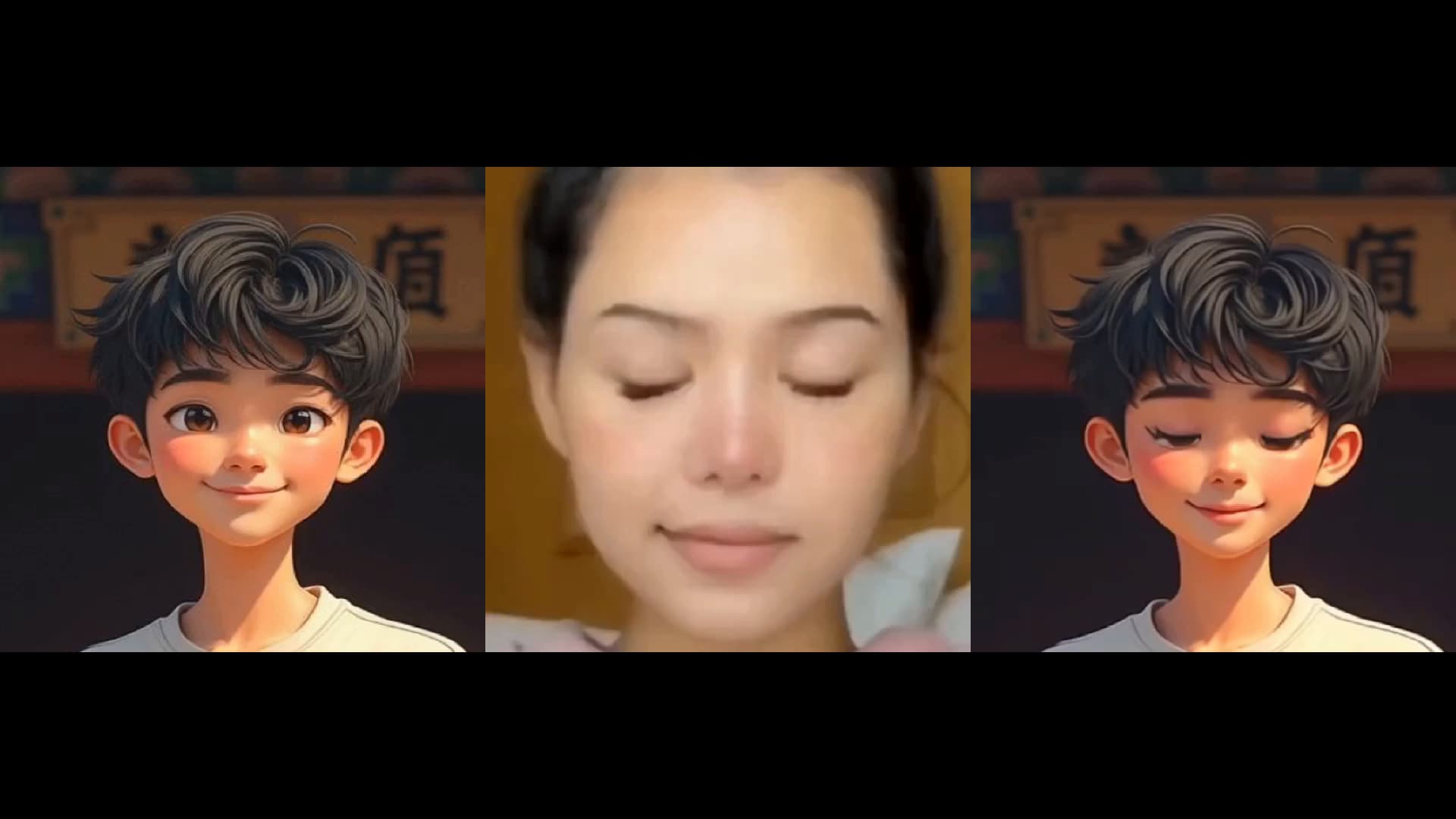Demystifying Tencent Hunyuan Video: How 3D VAE and Transformers Are Shaping the Future of AI Video Generation
 By Janey Sakshi
By Janey SakshiIntroduction
The Story Behind Hunyuan Video
Tencent's Hunyuan Video, boasting a whopping 13 billion parameters, has emerged as a major player in the open-source video generation arena. It's one of the largest models of its kind publicly available, and its mission is simple: to bridge the gap between closed-source and open-source video generation technologies, pushing the boundaries of what AI can do in video creation.

What Makes Hunyuan Video Tick?
At its core, Hunyuan Video cleverly combines 3D Variational Autoencoders (VAEs) and Transformer architectures to generate high-quality videos. It shines in multimodal tasks like text-to-video and image-to-video, producing visuals that are not only stunning in quality but also feature smooth motion, accurate text alignment, and seamless transitions between scenes.
3D VAE: Compressing Space and Time
How 3D VAE Works Its Magic
The 3D VAE within Hunyuan Video uses CausalConv3D technology to compress video data into a latent space. Think of it as distilling the essence of the video, significantly reducing the amount of data the Transformer model has to process. This process efficiently compresses the temporal dimension by a factor of 4 and the spatial dimensions by a factor of 8, resulting in 16-channel latent features.
Training and Inference: A Step-by-Step Approach
Hunyuan Video's training strategy is reminiscent of learning to walk before you run. It starts with low-resolution, short videos and gradually progresses to high-resolution, longer ones. During inference, a clever spatiotemporal slicing strategy helps manage memory constraints, with fine-tuning ensuring consistency between training and real-world application.
The Proof is in the Performance
The 3D VAE in Hunyuan Video outperforms other open-source VAE models in metrics like PSNR (Peak Signal-to-Noise Ratio), particularly when dealing with complex textures and dynamic scenes. This advantage is crucial for creating videos with realistic motion and intricate details.
Transformer Architecture: Unifying Generation and Multimodal Input
A Unique Hybrid Design: Two Streams Become One
Hunyuan Video's Transformer architecture employs a unique dual-stream to single-stream hybrid design. Initially, video and text tokens are processed by separate Transformer blocks, preventing interference between the two modalities. Then, these tokens are combined and fed into subsequent Transformer blocks, enabling effective fusion of multimodal information. It's like having two separate conversations that eventually merge into one.
The Power of Full Attention
The full attention mechanism used in Hunyuan Video offers significant advantages in performance, scalability, and speed compared to traditional spatiotemporal separated attention methods. It also supports unified generation of both images and videos, streamlining the training process.
RoPE: A 3D Twist
Hunyuan Video extends Rotary Position Embedding (RoPE) into three-dimensional space (time, height, width), significantly improving the model's ability to understand complex spatiotemporal relationships. This is key for creating videos with coherent motion and realistic scene transitions.
Text Encoder: Blending MLLMs and CLIP
The Role of Multimodal Large Language Models (MLLMs)
Multimodal Large Language Models (MLLMs) play a vital role in Hunyuan Video, excelling at image-text alignment and complex reasoning tasks. They outperform traditional encoders like CLIP and T5, enabling zero-shot generation through simple instructions and boosting the semantic richness of text features.
CLIP's Guiding Hand
CLIP text features provide global guidance in Hunyuan Video, integrated into both dual-stream and single-stream Transformer blocks to ensure high-quality output. This integration helps the generated videos closely match the input text descriptions.
Tailoring Prompts for Better Results
Hunyuan Video offers both "normal" and "director" modes for prompt rewriting, allowing users to fine-tune their input and better capture their creative vision. This helps the model generate videos that truly meet user expectations.
Scaling Up and Training Smart
Data: The Foundation of Success
Hunyuan Video uses a rigorous data filtering pipeline to build a high-quality training dataset. This pipeline evaluates videos based on various criteria, including aesthetics, motion speed, and clarity, ensuring the dataset is primed for generating visually appealing and dynamic content.
A Progressive Training Journey
The training process is progressive, starting with simple videos and gradually scaling up to more complex ones. This approach, combined with joint image-video training, significantly improves the model's overall performance and scalability.
Leveraging Neural Scaling Laws
Hunyuan Video takes advantage of neural scaling laws to carefully balance model size, dataset size, and computational resources. This optimization ensures efficient training and helps the model achieve state-of-the-art results.
Applications and Future Possibilities
Where Hunyuan Video Can Make a Difference
Hunyuan Video has huge potential across various fields, from filmmaking and music videos to game development, advertising, and education. Its ability to generate high-resolution videos with synchronized background music opens up exciting new creative possibilities.
Open Source: Fostering Collaboration
By open-sourcing its code and pre-trained weights, Hunyuan Video encourages innovation and collaboration within the AI community. The model supports multi-GPU parallel inference and offers an FP8 quantized version, making it more accessible to a wider range of users.
The Road Ahead
Looking forward, the developers of Hunyuan Video aim to further enhance its physical simulation capabilities and semantic understanding, enabling even more realistic and contextually accurate video generation. The model's ongoing development promises to push the boundaries of AI-driven content creation even further.
Final Thoughts
A Breakthrough for Video Generation
Hunyuan Video represents a significant leap forward in video generation technology, thanks to its innovative use of 3D VAE and Transformer architectures. Its open-source nature provides developers and researchers with a powerful tool, accelerating progress in the field.
The Future of Video is AI
As Hunyuan Video continues to evolve, it's poised to play an increasingly important role in creative expression and content production. Its ability to generate high-quality videos with minimal user input has the potential to democratize video creation, empowering individuals and organizations to bring their visions to life.
In short, Hunyuan Video is a groundbreaking model that combines cutting-edge AI techniques with practical applications, setting a new standard for video generation. Its impact on the industry and the broader AI community is undeniable, paving the way for a future where AI-powered video creation is within everyone's reach.
FAQ: Hunyuan Video FAQ
1. What is Hunyuan Video?
Hunyuan Video is an open-source video generation model developed by Tencent, boasting 13 billion parameters. It is designed to generate high-quality, cinematic videos from text prompts, supporting tasks like text-to-video and image-to-video. The model integrates advanced technologies such as 3D VAE and Transformer architectures, enabling seamless transitions between realistic and virtual styles.
2. What makes Hunyuan Video unique?
- High Physical Accuracy: Scenes adhere to physical laws, ensuring a natural viewing experience.
- Cinematic Quality: The model supports director-level camera movements and seamless transitions.
- Multimodal Fusion: It uses a Multimodal Large Language Model (MLLM) for better image-text alignment and complex reasoning.
- Open-Source: Hunyuan Video is fully open-source, encouraging community innovation and collaboration.
3. What are the system requirements for running Hunyuan Video?
To run Hunyuan Video, you need:
- An NVIDIA GPU with CUDA support (minimum 60GB memory for 720p resolution).
- CUDA versions 11.8 or 12.4.
- A Linux operating system is recommended for optimal performance.